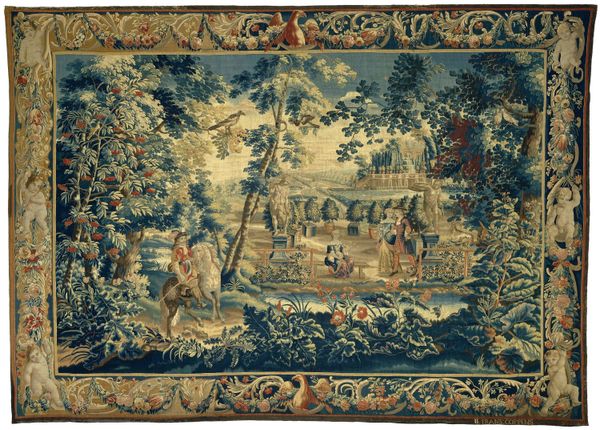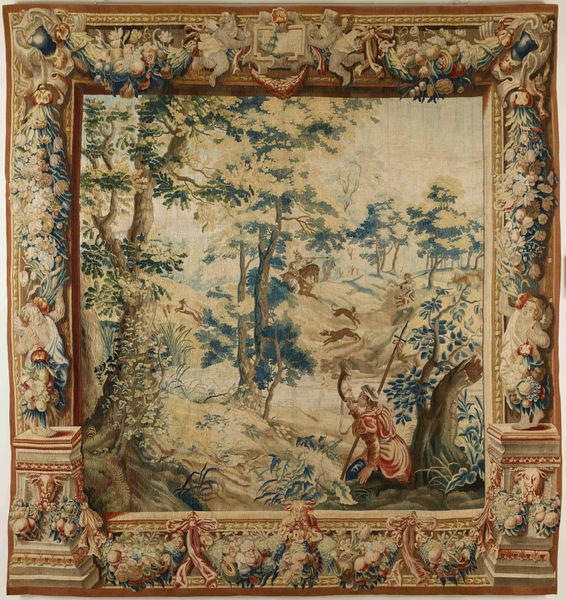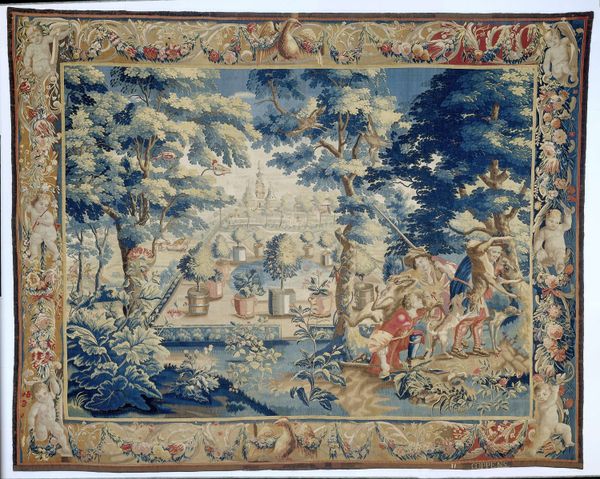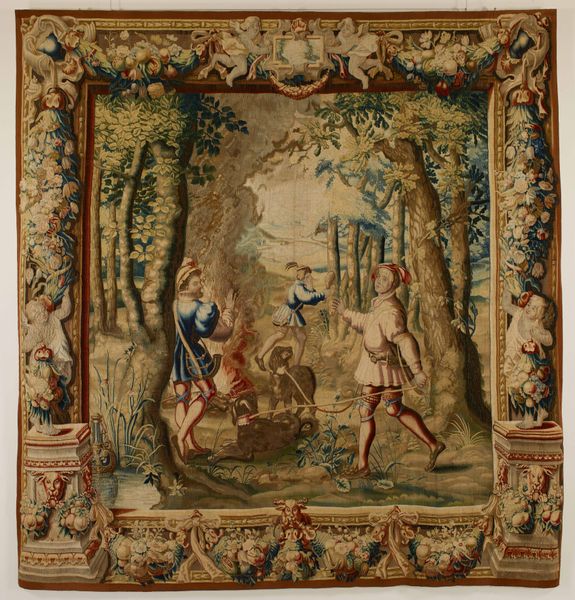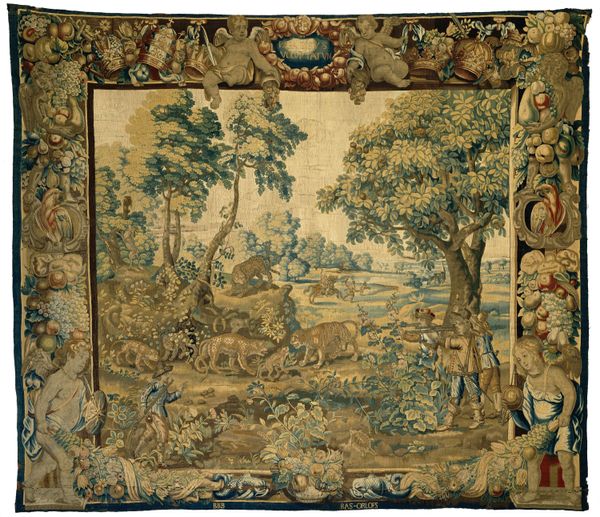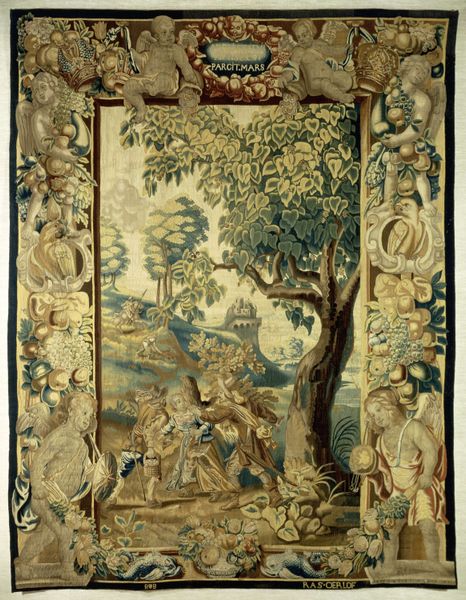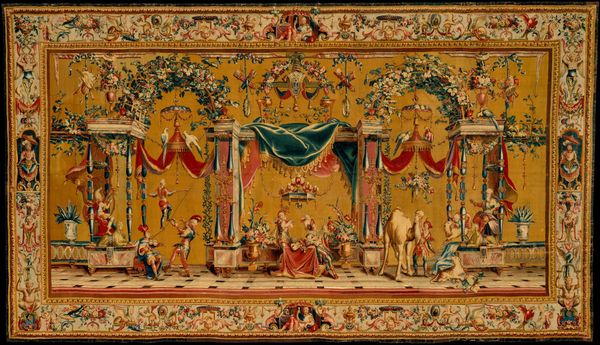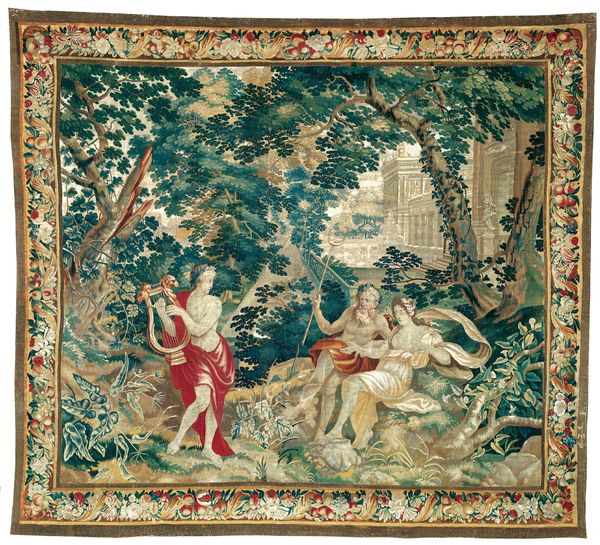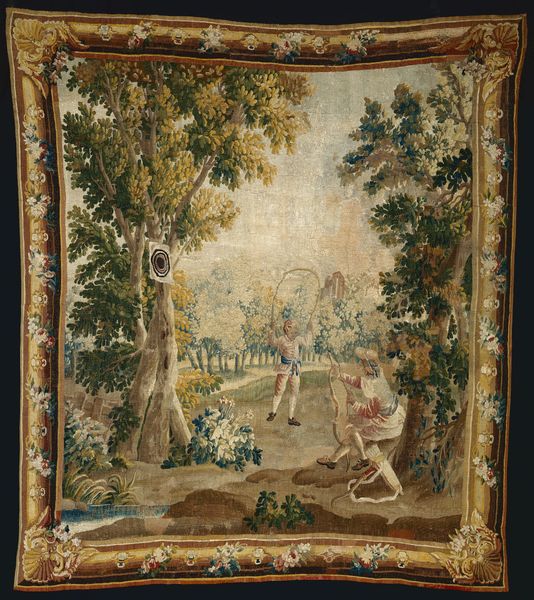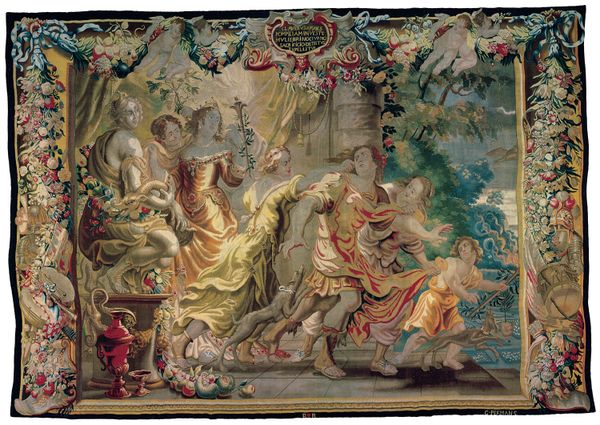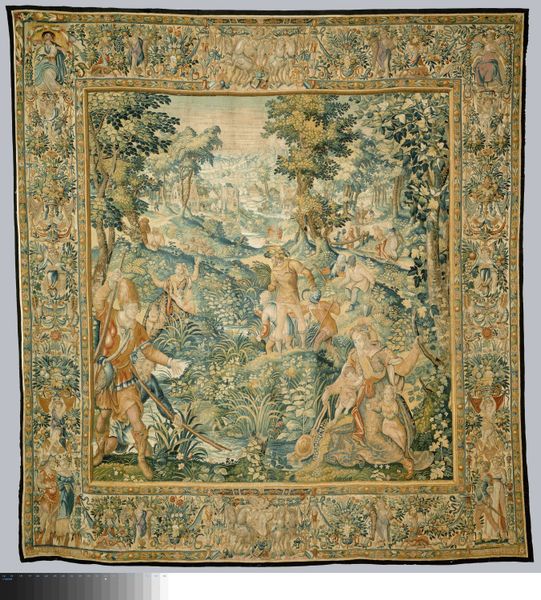
Apollo and Attendants Flaying Marsyas 3rd quarter 17th century
0:00
0:00
silk, textile
#
allegory
#
baroque
#
silk
#
landscape
#
textile
#
history-painting
Dimensions: 165 x 187 3/4 in. (419.1 x 476.89 cm)
Copyright: Public Domain
Clemente Maioli created this tapestry, Apollo and Attendants Flaying Marsyas, likely in the mid-17th century; it now resides in the Minneapolis Institute of Art. The scene is meticulously framed, drawing your eye into a densely forested landscape. The composition, with its symmetrical framing elements of sculpted figures and decorative motifs, creates a sense of classical order. Yet, this order belies the gruesome scene unfolding within. The tapestry’s structure is deeply informed by the era’s fascination with allegorical narratives and the representation of power. The flaying of Marsyas is not merely a depiction of violence; it’s a symbolic act, a visual metaphor for the triumph of Apollonian order over Dionysian chaos. The rich color palette and intricate detail serve to heighten the dramatic tension, inviting the viewer to contemplate the complex interplay between beauty and brutality, control and chaos, in the tapestry's overall design.
Comments
minneapolisinstituteofart almost 2 years ago
⋮
The satyr Marsyas, a goatlike woodland god, has been tied to a tree and is about to be skinned alive. His crime is pride. In this ancient myth, Marsyas challenges Apollo, god of music and famed for his skill with the lyre (a small harp), to a musical contest after finding a musical pipe. Apollo wins and names Marsyas’ punishment. Though professional tapestry weaving was decidedly male dominated, this finely woven tapestry was made under the direction of a woman. Maria della Riviera came from a Flemish (present-day Belgium) family of tapestry weavers and directed one of the Barberini workshops—established by Cardinal Francesco Barberini (1597–1679) and famed for their craftsmanship—from 1653 to 1678.
Join the conversation
Join millions of artists and users on Artera today and experience the ultimate creative platform.

